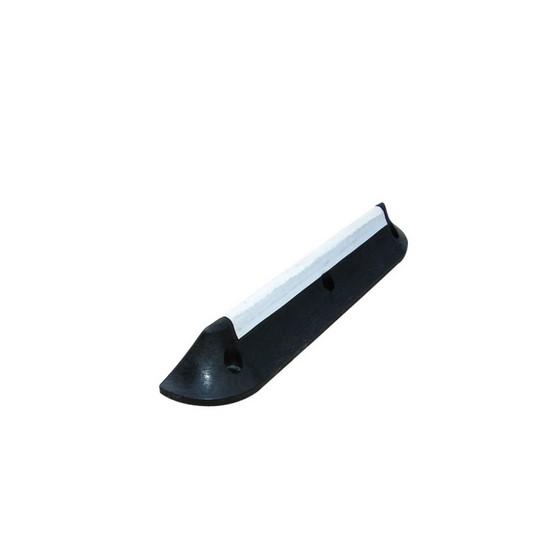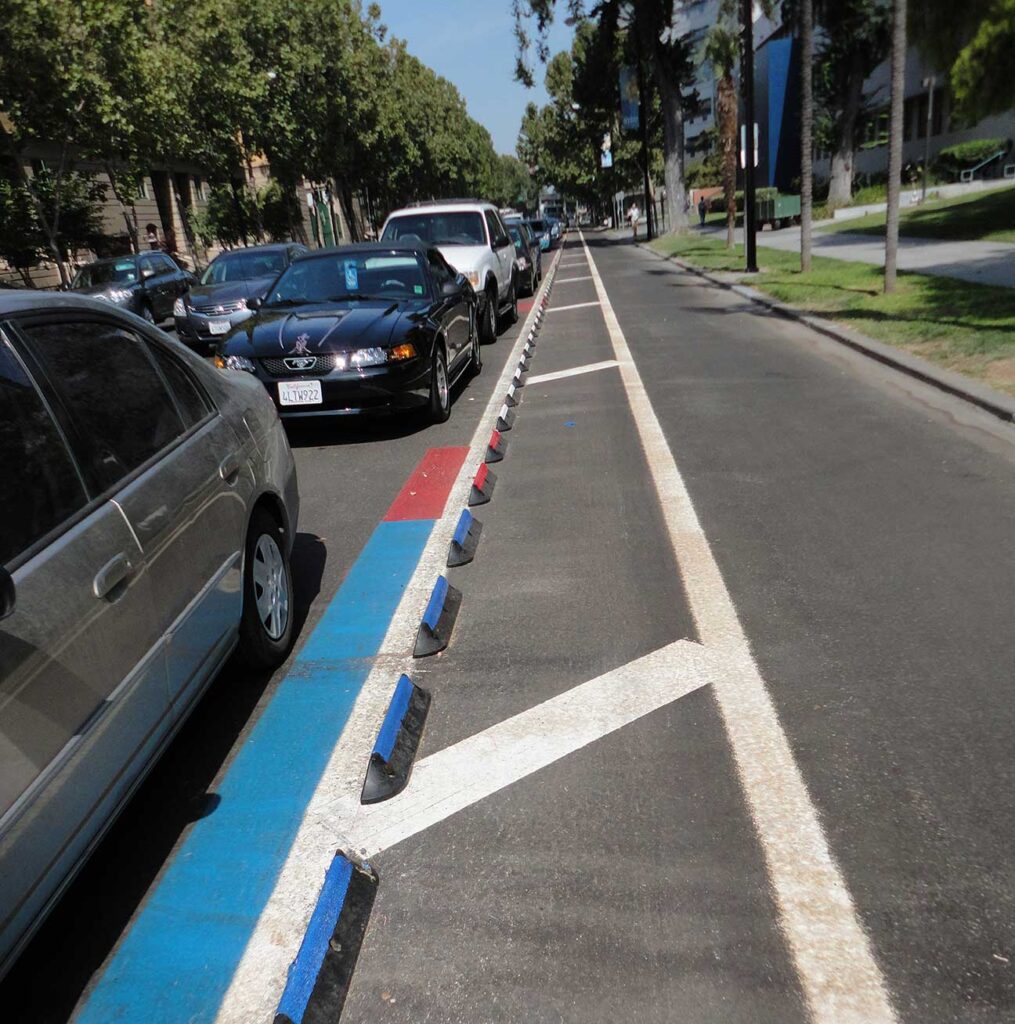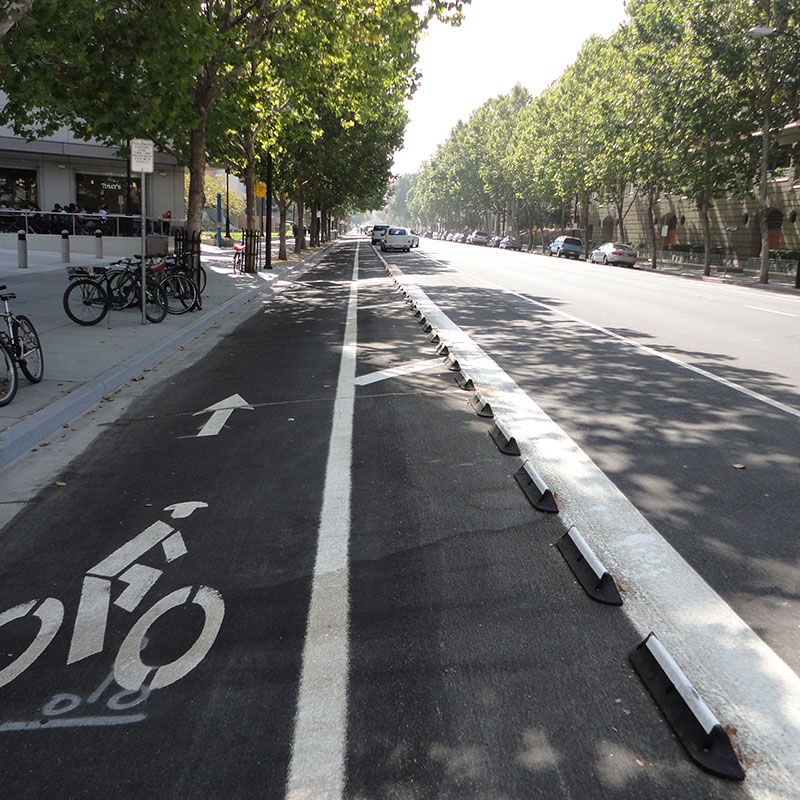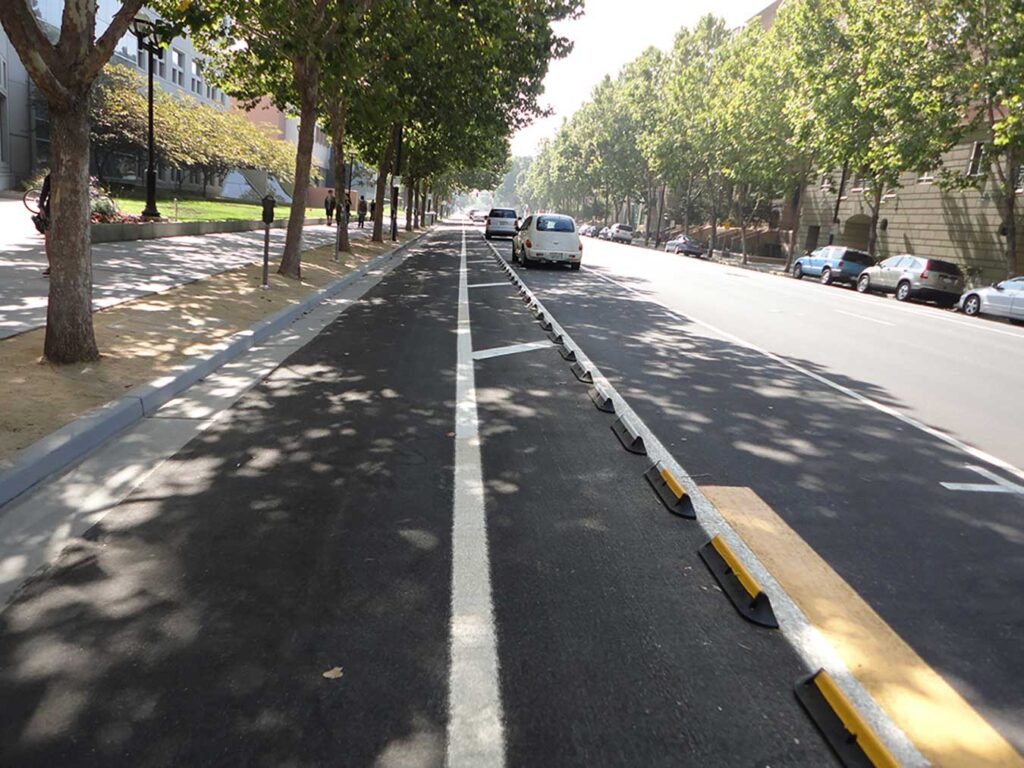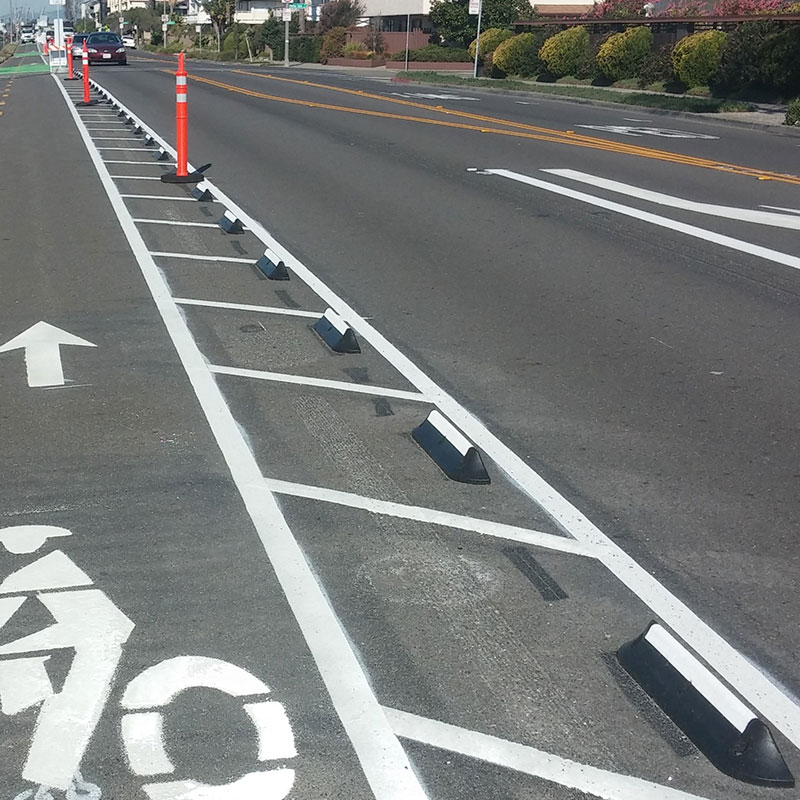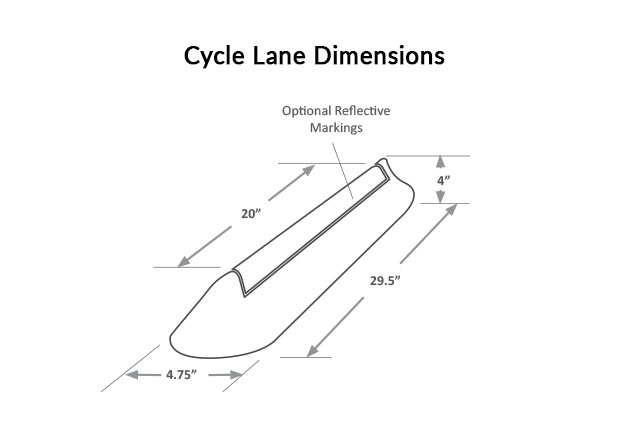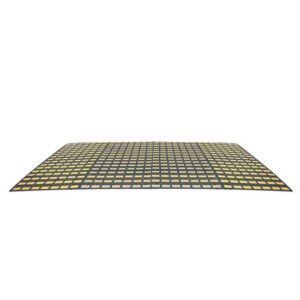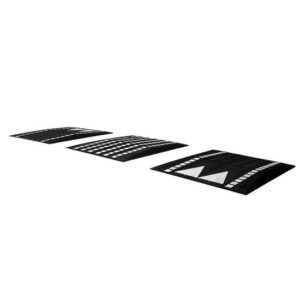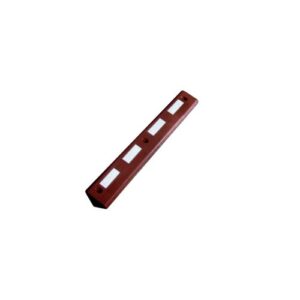CycleLane is a smart, safe solution that provides a visual separation between vehicle and bicycle lanes. Constructed of recycled rubber, CycleLane curbing is designed to define traffic spaces while protecting the safety of bicyclists. Ideal for use anywhere with bike traffic, the lane delineators separate vehicle and bike traffic, with a unique two sided design.
The elevated profile on the vehicle side prevents motorists from entering the bike lane, while the sloped profile on the bicyclist side gently guides cyclists back into the bike lane. CycleLane curbing can help you create complete streets that are safe for everyone.
Features:
- Precise traffic delineation
- Unique sloped profile
- Highly visible with bright highway tape
- Environmentally friendly
- Quick and simple to install
- Protects bicyclists
Specs:
- Unit Dimensions:
- Length: 29.5” (750 mm)
- Width: 4.75” (120 mm)
- Thickness: 4” (100 mm)
- Weight: 10 lbs
- Embedded White Reflective Top Mounted Strip: 3.5” W x 20” L
- Speed Table Specs:
- Length: From From 72” & up by 42” increments
- Width: From 84” & up, by 18” increments
- Height: 3″ or 4″
- Physical Properties:
- Material: Compression molded recycled rubber
- Density: 0.6 oz/cu in (ASTM C642)
- Minimum Tensile Strength: 500 psi (ASTM D412)
- Coefficient of Thermal Expansion: 8 x 10 5 in/in/0 F (ASTM C531)
- Shore Hardness: Minimum 70A
- Specific Gravity: 1.1
- Finishing: Black with reflective white tape (yellow, blue, or red reflective is also available upon request)
- Components: Recycled rubber – Durable and reflective white striping/marking tape
Speed Bump, Speed Hump or Speed Table?
If you’re involved in traffic calming for a city, private community, or corporate campus, you probably already know that speed bumps are abrupt, aggressive devices that slow cars almost to a halt. They’re appropriate in parking lots or driveways but are not traffic calming tools for residential streets.
But speed humps and speed tables both are. So why choose one over another?
Speed humps are rounded in shape. They curve up and then curve back down, without ever having a flat surface on top. Speed tables, on the other hand, are flat-topped. Depending on the length of the speed table, the entire wheelbase of a car can often rest on top of it. What practical difference does that design make though?
What is the Ideal Speed for Your Roads?
The first question you want to consider when deciding between speed humps and speed tables is what the speed limit is on your roads. Speed humps, while far less aggressive than abrupt speed bumps, still slow cars more significantly than speed tables do. Speed tables are ideal for streets with typical residential speed limits of around 25 mph. They help to keep traffic flowing but at a safer pace. Many cities prefer speed tables over speed humps for the calmer, smoother experience they offer drivers. Other cities may prefer the more aggressive approach that speed humps offer, particularly on streets with lower speed limits.
Emergency Vehicles
The less significant speed reduction is also a consideration for cities that don’t want abrupt traffic calming devices that will significantly impede emergency vehicles. While speed tables don’t allow ambulances to pass without slowing, they do offer an option that slows them less drastically. This can also be helpful on bus routes or on any roadways where cities want to slow cars down to improve safety but also want to keep the flow of traffic smooth and constant.
